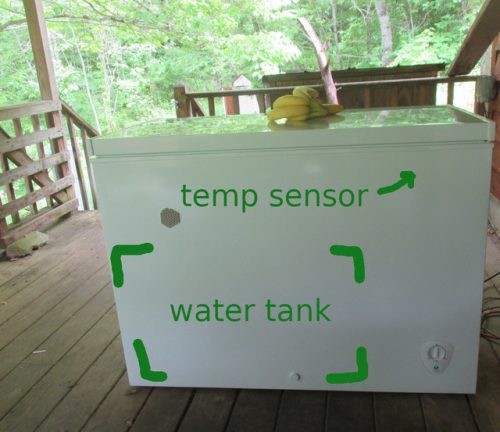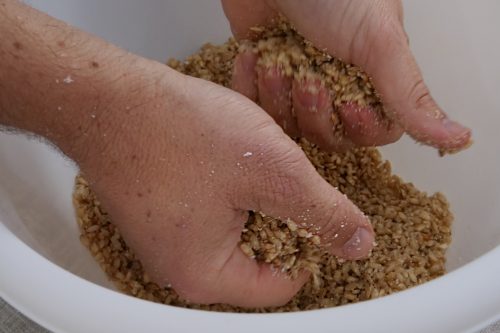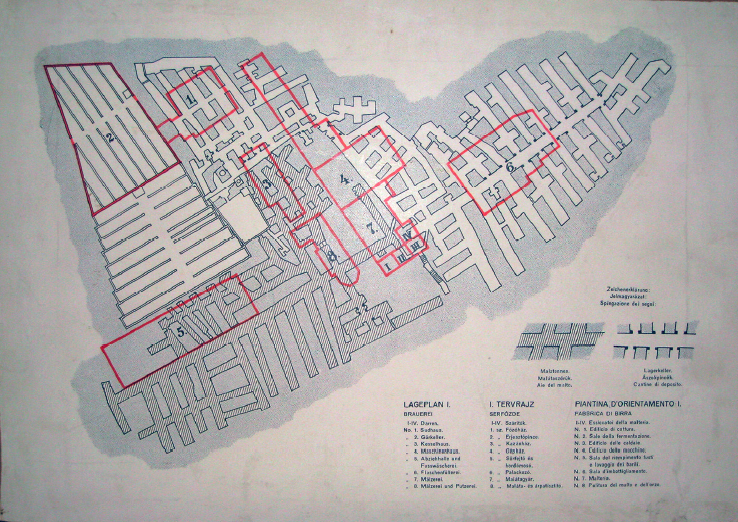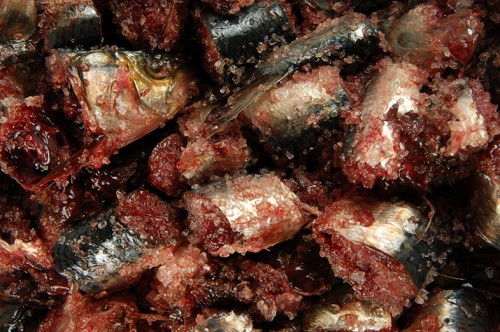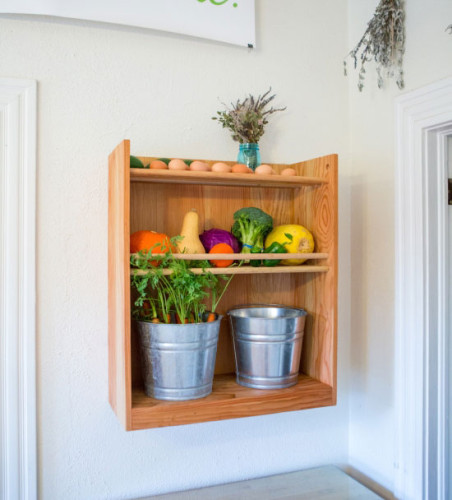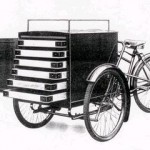Joey Hess has designed, built and tested an off-grid, solar powered fridge, with no battery bank. Using an inexpensive chest freezer with a few modifications, the fridge retains cold overnight and through rainy periods. The set-up consists of a standard chest freezer, an added thermal mass, an inverter, and computer control. He writes: [Read more…]
Off-Grid, Solar-Powered, Zero-Battery Refrigerator
Fermentation and Daily Life
There is a moment in the life of fruits and vegetables that has always puzzled and fascinated me. Put out a dish of strawberries, and in days some darker spots will appear. Maybe a thin tendril of mold sprouts out from the strawberry’s body. At this point, you can still eat it, simply by cutting off the moldy bit. But all of a sudden, the strawberry has clearly died. It’s inedible, sour. It has passed over in to the world of bacteria, mold, and minerals—it is no longer a self-regulating organism. It has stopped being an individual, but has become multitudes.
How does this happen? When is an organism living, and when is it dead? Where does death come from, and why does this change of state happen so quickly? Amazingly, we’ve developed some techniques to play with this boundary between life and death, stretch it, and blur it. I’m not talking about cryogenic freezing, blood transfusion, lab-grown meat, or any other modern technology. I’m talking about fermentation, the process of controlled decay of living organisms.
From coffee to ketchup, bread to sausage, wine to cheese, fermented foods are all around us. These types of fermentation tend to happen in far-off factories. Coffee berries are fermented before they’re roasted. To make ketchup, tomatoes are puréed en masse, left to rot, then heated to kill the bacteria. We usually don’t get the chance to see for ourselves the transformation of life—into other forms of life.
But you can. In this essay, I talk about fermentation: what makes it so magical, why people are so afraid of it. I talk about some strategies people use to make fermentation part of their daily life, and why modern life makes it so hard to do so. And finally, I speak to the ethics of fermentation—what we can learn from it and how it can help us think differently. [Read more…]
Historical Storage Cellars in Budapest
The Kőbánya district of Budapest is situated on the eastern margins of the Hungarian capital city. Beneath Kőbánya there is an extensive limestone layer, in which tunnels and passages have been made, some of which appear to date from the 13th century. In the 19th century, the limestone caverns of the Hungarian capital city Budapest were used for the refrigeration of perishable goods in large quantities.
This article analyses the architectural development of these evidently low-tech facilities, while also exploring their significant role in the city’s urbanisation. The technical functions and structure of the system of caverns may be useful as a resource for society in the future when the supply of fossil fuels runs out.
The effectiveness of the caverns as place for refrigeration can be demonstrated through climatic calculations. The cavern system has significant energy capabilities, given that there is a constant air temperature throughout the year.
Read more: Pilsitz, Martin, and Zsuzsanna Nádasi-Antal. “Historical storage cellars in Budapest: The architectural history and functional operation of an industrial building in 19th-century Hungary.” Építés-Építészettudomány (2018): 1-20.
Garum: Fermented Fish Sauce for the Ancient Roman Masses
Fish fermentation allowed the ancient Romans to store their fish surplus for long periods, in a time when there were no freezers and fishing was bound to fish migratory patterns. [Read more…]
DIY Urban Root Cellar
“As we experiment with cultivating a greater agrarian connection, it’s time for us to revisit the age-old wisdom of the root cellar. Traditionally, root cellars are underground structures used to store vegetables, fruits and other foods. Because the earth’s mean temperature hovers around 60 degrees, a root cellar serves as the perfect natural refrigerator.
Although building a root cellar may not be practical for everyone—especially for those of us who live in urban areas—we can still apply some of the same concepts and techniques utilized in traditional root cellars to keep our harvest naturally fresh and lasting longer. The design of this urban root cellar, by Elliott Marks, was inspired by an exhibition by Jihyun Ryou, called “Save Food from the Refrigerator.”
The design incorporates key elements of a good root cellar — a variety of shelves, humidity, and air circulation — while also being small and portable. It is easily achievable by anyone and we encourage you to adopt this design or create a version that works for you. The general concept is to create a storing space specifically designed to preserve the garden harvest using grandparents’ know-how.”
Read more: Make your own urban root cellar, Mother Earth News.
Preserving Food by Fermentation
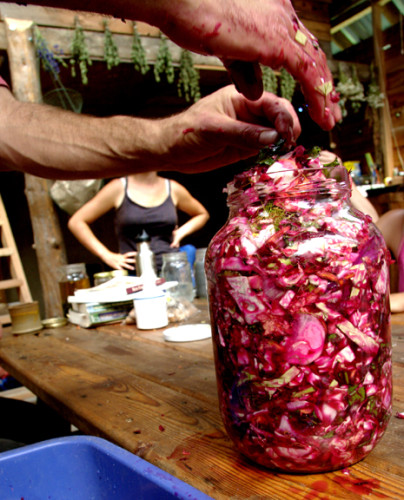 “Extracting nutrition via the bacteria and yeasts that live on the surfaces of food sources has traditionally enabled people all over the world to make use of seasonal abundance for leaner times. In a climate-constrained future, when the use of fossil fuels (and thus refrigeration) will need to be greatly reduced, fermentation could play a key role in preserving both our food and our cultural diversity.
“Extracting nutrition via the bacteria and yeasts that live on the surfaces of food sources has traditionally enabled people all over the world to make use of seasonal abundance for leaner times. In a climate-constrained future, when the use of fossil fuels (and thus refrigeration) will need to be greatly reduced, fermentation could play a key role in preserving both our food and our cultural diversity.
Before refrigeration came into our houses and global supply chains, most of our winter stores were salted, pickled, and dried. Many of the strong compelling flavors found in European delicatessens come via fermentation: cheese, salami, gherkins, vinegar, olives. Likewise the mainstays of Oriental cuisine—soy, miso, and tempeh—and the whole of the world’s drinks cabinet, including everyday luxuries such as coffee and chocolate.
If you were wary of venturing into this unknown territory alone, you could not hope for a more enthralling guide than Sandor Ellix Katz: “My advice is to reject the cult of expertise. Do not be afraid. You can do it yourself.” There is no recorded case, he assures us, of poisoning from fermented vegetables.”
Read more: Fermenting Change. Thanks to Aaron Vansintjan. More low-tech food preservation.
